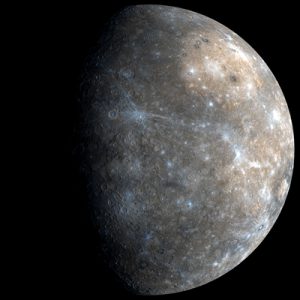All five of the readily observable planets in our solar system – Mercury, Venus, Mars, Jupiter and Saturn – are visible at various times in the night skies this month. Jupiter remains the most prominent, shining brilliantly throughout the night.
If you are planning to go out to search for any of these planets, consider this. Until 1992 astronomers knew only of nine planets in the entire universe – those of our own solar system. One of those, Pluto, was subsequently and controversially demoted from planetary status in 2006, leaving us with just a meagre eight (although over the years this has been compensated for by the ongoing discovery of a great many moons, dwarf planets, asteroids and new comets in this region of space).
However, since 2009 a revolution has been taking place in the search for exoplanets – that is planets beyond our solar system. A small, space-based telescope called Kepler has been constantly scanning regions of the Milky Way galaxy, looking for minute, periodic changes in brightness that might indicate the transit of a planet across the face of a distant star.

The project has been so successful that last Tuesday, Nasa scientists announced they have just detected their 1,000th exoplanet. Included in the count are three new Earth-like ones, all less than twice the size of our own planet and, crucially, thought to exist in an orbital region known as the Goldilocks zone, where temperatures are neither too hot nor too cold, thus allowing for the possibility for water to exist in liquid form. Extrapolations of all the exoplanet data gathered so far suggest there may be between 11 and 40 billion earth-like planets in our own galaxy, depending on the type of host stars included in the analysis. Further technological developments in the next few years should, eventually, enable imaging of some of these planets, together with a detailed analysis of their composition and atmospheres.
Meanwhile, if you would like to do some planet-hunting of your own, you are unlikely to be able to find any new ones without a considerable investment in the latest space-based technology. However, you may enjoy the simpler challenge of searching for and identifying one of the most elusive inner planets in our own solar system. You can do this without any optical assistance, though a good pair of binoculars might be useful.
Mercury is a planet that few people are likely to see in their lifetimes, unless they make a dedicated effort. The difficulties occur for a number of reasons – principally because it is a very small, with a diameter less than 40 per cent that of the Earth, and it is the closest planet to the Sun. Also, its orbit is such that it becomes visible only just before dawn or just after sunset. And, as it can be seen only low in the sky, its light has to pass through ten times the amount of atmospheric thickness to reach us, compared with a planet that we can view directly overhead.
Currently, although Mercury is not at its closest point to the Earth, it is visible to the naked eye in the west just after sunset. It is not difficult to find its potential location, as Venus is shining very brightly just a few degrees above it to the south. You will need to be in a place with an unobstructed horizon, such as the beach, the nature reserve, or possibly the western end of Watchbell Street in Rye. As there is often low cloud on the horizon, or atmospheric haze, even when the rest of the sky seems to be clear, you might need to be persistent over some days. However, that persistence can pay off. For example, last Tuesday evening, just after sunset, there was a spectacular view of Mars from Winchelsea Beach, looking out over the sea to the southwest, with Venus shining very brightly not far away over Fairlight Hill. Below it Mercury was faint but discernible in the band of golden light in the sunset, descending towards the coastguard station above the cliffs.
At present Mercury sets about 75 minutes after the sun. If the sky happens to be clear this Saturday, January 10, then Mercury and Venus will be visible, only a few degrees apart, as they head towards the horizon. At this point in its orbit Mercury is 107 million miles away, while Venus is 148 million miles from the Earth.
I wish you the best of luck with your planet-hunting activities. As usual, all the precise details for the night sky can be found at heavens-above.com (important – remember to enter your location for accuracy). Photographs and other information from Nasa’s Messenger satellite, which has been in orbit around Mercury since 2011, are available here.
Main photo: Nick Taylor. Mercury close-up: Nasa/Johns Hopkins University Applied Physics Laboratory/Carnegie Institution of Washington



